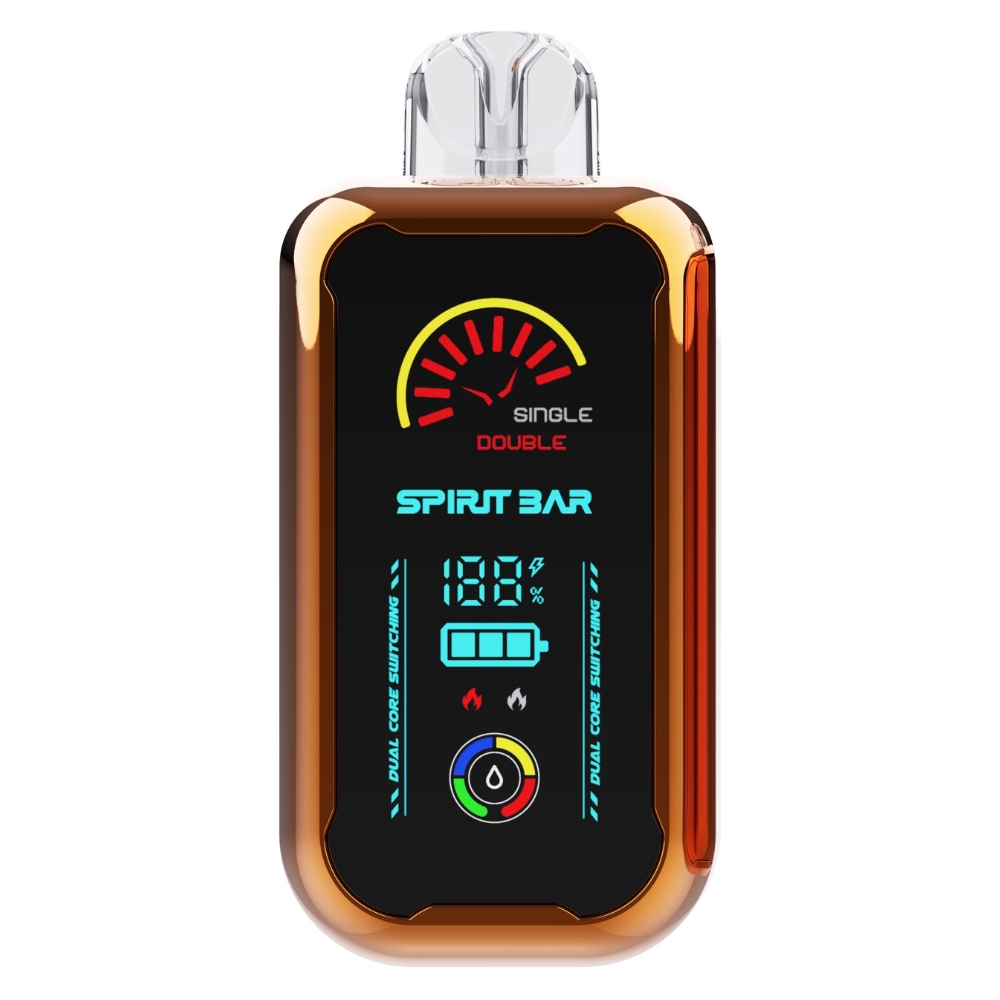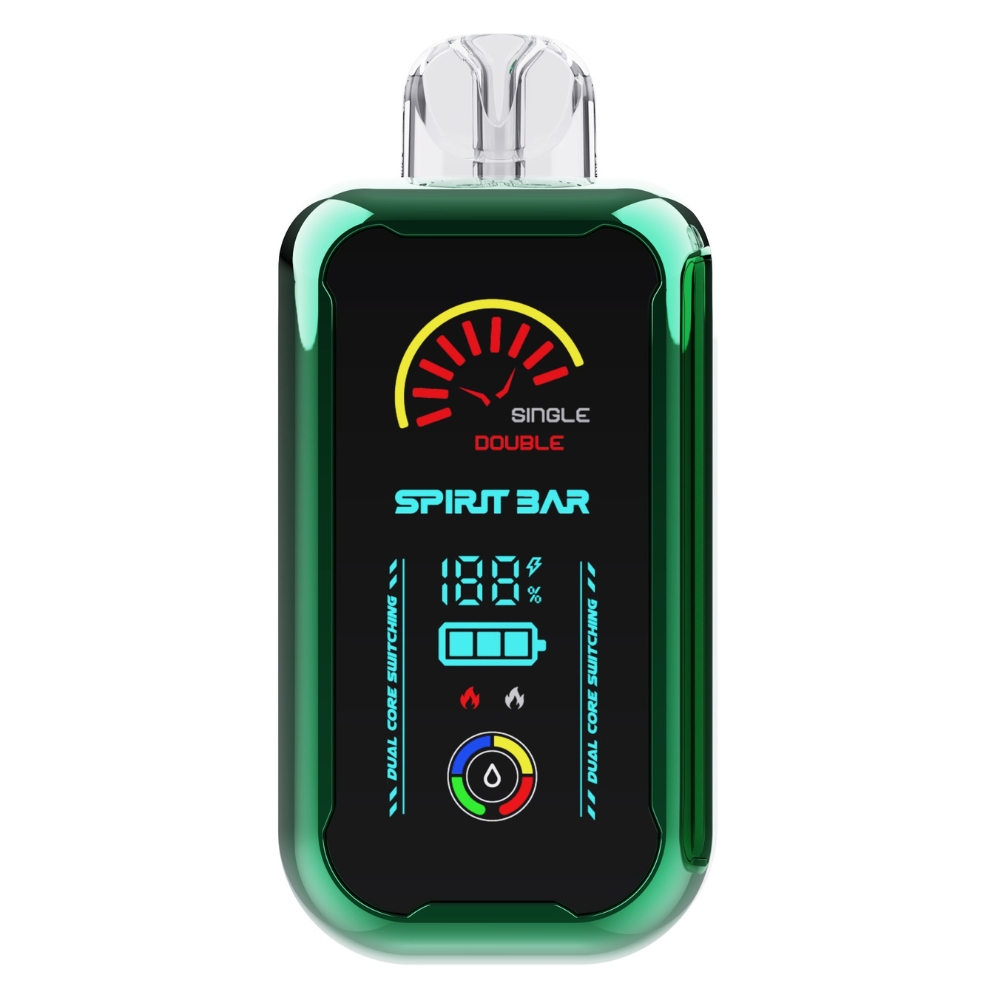How to Pass a Vape Detector: Tips and Tricks
Are you a vaper who needs to pass a vape detector? Perhaps you’re a student who wants to sneak a quick puff in the bathroom, or maybe you’re at a concert or event where vaping is prohibited. Whatever your reason, passing a vape detector can be a challenge, but it’s not impossible. With a few tips and tricks, you can outsmart these devices and enjoy your vape without getting caught.
Vape detectors are becoming more common in public spaces like schools, hospitals, and office buildings. These devices are designed to detect the vapor emitted by e-cigarettes and other vaping devices, and they can trigger an alarm or alert security personnel when they detect vaping activity. While the use of e-cigarettes is legal in many places, vaping in prohibited areas can result in fines or other penalties, so it’s important to know how to pass a vape detector if you need to vape discreetly.
Fortunately, there are several strategies you can use to avoid triggering a vape detector. From using a small, discreet vape device to exhaling through your clothes, there are many ways to outsmart these devices and enjoy your vape without getting caught. In this article, we’ll explore some of the most effective tips and tricks for passing a vape detector, so you can vape discreetly and without worry.
Understanding Vape Detectors
https://www.youtube.com/watch?v=AEmZvdkgm6M&embed=true
If you’re wondering how to pass a vape detector, it’s important to understand how these devices work. Vape detectors are designed to detect the particles and chemicals that are released when you use a vape or e-cigarette. These detectors are commonly used in public places like schools, airports, and hospitals to enforce no-smoking policies and ensure that the air is clean and healthy.
There are different types of vape detectors available, but most of them work by detecting the particles that are released when you exhale vapor from your e-cigarette. Some vape detectors use sensors that can detect the presence of chemicals like nicotine, while others use sensors that can detect the particulate matter in the air.
It’s important to note that vape detectors are not foolproof and can sometimes produce false positives. For example, if you’re using a vape detector in a room with poor ventilation, it may be more likely to detect particles in the air even if you’re not using a vape.
To avoid triggering a vape detector, there are a few things you can do. First, try to use your vape in a room with good ventilation. This will help to dissipate the vapor more quickly and reduce the chances of triggering the detector. Additionally, you can try exhaling through your clothes, as fabric can catch some of the particles and help them disperse before they reach the detector. Finally, avoid using your vape near air vents or windows, as the airflow can help to spread the vapor around and make it more likely to be detected.
By understanding how vape detectors work and taking a few simple precautions, you can reduce the chances of triggering a detector and enjoy your vape without any issues.
The Science Behind Vape Detectors
Vape detectors are designed to detect the presence of vapor or smoke in the air. They work by using sensors that detect the presence of particles in the air. When vapor or smoke particles are detected, the detector sends a signal to a central monitoring system, which triggers an alarm or alerts security personnel.
The technology behind vape detectors is similar to that used in smoke detectors. Smoke detectors use photoelectric sensors or ionization sensors to detect smoke particles in the air. Vape detectors, on the other hand, use sensors that are specifically designed to detect vapor particles.
Vape detectors can be installed in a variety of locations, including schools, office buildings, and public spaces. They are often used in areas where smoking or vaping is prohibited, such as bathrooms or other enclosed spaces.
Some vape detectors are designed to be discreet, while others are more visible. Discreet vape detectors are often installed in ceiling tiles or other inconspicuous locations. Visible vape detectors, on the other hand, are often installed in plain sight as a deterrent to would-be vapers.
Overall, vape detectors are an important tool in maintaining a smoke-free and vapor-free environment. By detecting the presence of vapor or smoke particles in the air, they can help prevent health risks associated with secondhand smoke and vapor.
Risks of Vaping
Vaping has become increasingly popular in recent years, especially among young people. However, it is important to understand the potential risks associated with vaping. Here are a few risks to keep in mind:
-
Nicotine Addiction: Many vape juices contain nicotine, which is highly addictive. Nicotine can harm the developing brain of adolescents, and can also have negative effects on the cardiovascular system.
-
Lung Damage: Vaping can cause lung damage, including inflammation and scarring. This can lead to difficulty breathing, coughing, and other respiratory problems.
-
Chemical Exposure: Vaping involves heating a liquid that contains chemicals, some of which can be harmful when inhaled. Some of these chemicals include formaldehyde, acetaldehyde, and acrolein.
-
Battery Explosions: Vape devices are powered by batteries, and there have been reports of these batteries exploding or catching fire. This can cause serious injuries, including burns and permanent disfigurement.
It is important to be aware of these risks and to take steps to minimize them. If you are a vaper, consider using vape juices that do not contain nicotine, and be sure to follow the manufacturer’s instructions when using your device. Additionally, be aware of the signs of lung damage and seek medical attention if you experience any symptoms. Finally, always use caution when handling vape devices and their batteries to avoid accidents.
Methods to Avoid Detection
https://www.youtube.com/watch?v=n51H9MavGHk&embed=true
If you’re looking to vape in a place where vape detectors are installed, there are a few methods you can use to avoid detection:
-
Choose the right device: Some devices are less likely to trigger vape detectors than others. For example, disposable e-cigarettes or e-cigarettes with clearomizers are less likely to produce visible vapor that can be detected by vape detectors. You can also avoid using devices with strong aromas, such as flavored e-liquids or scented oils, as these can also trigger vape detectors.
-
Stay out of range: Vape detectors are typically installed at a height of 8 feet and can detect vapor within a 12′ x 12′ space. So, if you stay out of this range, you can vape without setting off detectors. Keep in mind that this range can vary depending on the type of vape detector installed, so it’s best to be cautious and stay as far away as possible.
-
Use a vape hood: A vape hood is a device that can be installed in a room to capture and filter out vapor. They work by drawing in the vapor and filtering it through a series of filters before releasing clean air back into the room. Vape hoods can be expensive, but they are an effective way to avoid detection if you’re in a place where vape detectors are installed.
-
Cover your exhale: One way to avoid detection is to cover your exhale with a cloth or your hand. This can help to minimize the amount of vapor that is released into the air and reduce the chances of triggering a vape detector.
-
Know your surroundings: Before you start vaping, take a look around and see if there are any vape detectors installed. If you see one, try to avoid vaping or use one of the methods listed above to avoid detection. It’s also a good idea to be aware of any security cameras or personnel in the area, as they may also be able to detect vaping.
Remember, it’s important to be respectful of others and follow the rules of the place you’re in. If vaping is not allowed, it’s best to find a different location or abstain from vaping altogether.
Using Air Purifiers
If you are a frequent vaper, you may want to consider investing in an air purifier to help eliminate the smoke and odor from your indoor vaping sessions. Air purifiers are designed to filter the air in a room, removing pollutants and allergens, including smoke and vapor.
When choosing an air purifier for vaping, look for models with solid HEPA filters and activated carbon filters, as these are the most effective at removing smoke and odor. Portable air purifiers are also a good option, as they can be moved from room to room as needed.
It is important to note that air purifiers are not a foolproof solution for passing vape detectors. While they can help to reduce the amount of smoke and odor in a room, they may not completely eliminate it. Additionally, some vape detectors are designed to detect even the smallest amounts of vapor, so it is always best to err on the side of caution and avoid vaping in areas where detectors are present.
If you do choose to use an air purifier, be sure to follow the manufacturer’s instructions for use and maintenance. This may include replacing filters regularly and cleaning the unit as needed to ensure optimal performance.
Overall, while air purifiers can be a helpful tool for reducing smoke and odor from indoor vaping, they are not a guaranteed solution for passing vape detectors. It is always best to use discretion and avoid vaping in areas where detectors are present to avoid any potential issues.
Choosing the Right Vape Devices
When it comes to passing a vape detector, choosing the right vape device is crucial. Here are some factors to consider when selecting the right vape device for you:
Type of Vape Device
There are many types of vape devices available in the market, including e-cigarettes, vape pens, mods, and pod systems. Each type has its own set of pros and cons, so it’s important to choose one that suits your needs and preferences.
For example, e-cigarettes and vape pens are great for beginners because they are easy to use and maintain. Mods, on the other hand, are more advanced and customizable, making them ideal for experienced vapers who want more control over their vaping experience.
Battery Life
Another important factor to consider is the battery life of the vape device. A device with a longer battery life will last longer between charges, which is especially important if you plan to use it frequently throughout the day.
Vapor Production
If you’re looking for a vape device that produces a lot of vapor, then you should consider a device with a high wattage output. However, keep in mind that devices with high wattage output tend to use up more battery life and e-liquid.
E-Liquid Compatibility
Make sure to choose a vape device that is compatible with the type of e-liquid you plan to use. Some devices are only compatible with certain types of e-liquid, such as nicotine salt e-liquid or high VG e-liquid.
Price
Finally, consider your budget when choosing a vape device. While more expensive devices may offer advanced features and better performance, there are plenty of affordable options available that still provide a great vaping experience.
By considering these factors, you can choose the right vape device that suits your needs and helps you pass a vape detector with ease.
Proper Vaping Etiquettes
When vaping in public places, it’s important to be mindful of others around you. Here are some proper vaping etiquettes to follow:
-
Familiarize yourself with smoking rules and policies in your area. Some areas might include vaping as part of smoke-free laws and restrictions. It’s in your interest to abide by these regulations, as failure to do so can get you in trouble with the law. (source)
-
Don’t vape around children, pets, or pregnant women. Secondhand vapor can be harmful to those around you, especially children and pregnant women. It’s best to avoid vaping in confined spaces like elevators, public restrooms, or small rooms with poor ventilation. (source)
-
Keep plumes of vapor to a minimum. While it’s tempting to blow big clouds, it’s important to be considerate of those around you. Blowing huge clouds can be distracting and annoying to others. Try to minimize the amount of vapor you exhale, or find a less crowded area to vape. (source)
-
Avoid vaping in cars or other confined spaces. Vaping in cars can create a haze that can make it difficult to see while driving. It can also leave a lingering smell that can be difficult to get rid of. If you must vape in a car, crack a window to let the vapor out. (source)
-
Don’t try to convert people into vaping. While you may love vaping, not everyone is interested in it. Respect other people’s choices and avoid trying to convert them to vaping. If someone asks you about vaping, answer their questions honestly but don’t push them to try it. (source)
By following these proper vaping etiquettes, you can enjoy vaping without causing any inconvenience to those around you.
Legal Implications of Vaping
When it comes to vaping, there are legal implications to consider. While vaping is generally considered a safer alternative to smoking, it is still subject to regulations and laws. Here are a few things to keep in mind:
-
Age restrictions: In most states, the legal age to purchase and use vaping products is 18. However, some states have raised the age to 21. It is important to check the laws in your state to avoid any legal issues.
-
Vaping in public places: Many states have laws that prohibit vaping in public places, just like smoking. This includes restaurants, bars, and other public spaces. Violating these laws can result in fines or other penalties.
-
Vaping on school grounds: Vaping on school grounds is also prohibited in many states. This includes both students and staff. Schools may have their own policies in place, so it is important to check with your school before vaping.
-
Traveling with vaping products: If you plan to travel with your vaping products, it is important to check the laws in the state or country you will be visiting. Some places have strict laws regarding vaping, and you could face legal consequences if you are caught violating them.
-
Vaping and driving: Just like with smoking, it is illegal to vape while driving in many states. This is because it can be a distraction and impair your ability to drive safely.
By following these laws and regulations, you can avoid any legal issues related to vaping. It is important to stay informed and up-to-date on the laws in your area to ensure that you are vaping responsibly.
Health Consequences of Vaping
Vaping has become increasingly popular in recent years, but many people are unaware of the health consequences associated with it. Here are some of the potential risks you should be aware of:
-
Increased heart rate and blood pressure: Vaping raises your blood pressure and spikes your adrenaline, which increases your heart rate and the likelihood of having a heart attack. This is because vaping liquids contain nicotine, which is a stimulant.
-
Lung damage: The particles in the vapor from e-cigarettes can cause damage to your lungs, leading to respiratory problems. This is especially concerning for people with pre-existing lung conditions, such as asthma or chronic obstructive pulmonary disease (COPD).
-
Nicotine addiction: Nicotine is highly addictive, and many e-cigarettes contain high levels of it. This means that if you start vaping, you may become addicted to nicotine, which can have a range of negative consequences for your health.
-
Unknown long-term effects: There is still much we don’t know about the long-term effects of vaping, including what chemicals make up the vapor and how they affect physical health over time. It’s important to remember that vaping is a relatively new trend, and we are still learning about its potential risks.
If you are considering vaping, it’s important to weigh the potential risks against any perceived benefits. While some people may find vaping to be a helpful tool for quitting smoking, it’s important to remember that it is not without risks. If you are currently vaping and are concerned about your health, talk to your doctor about ways to quit or reduce your use.


